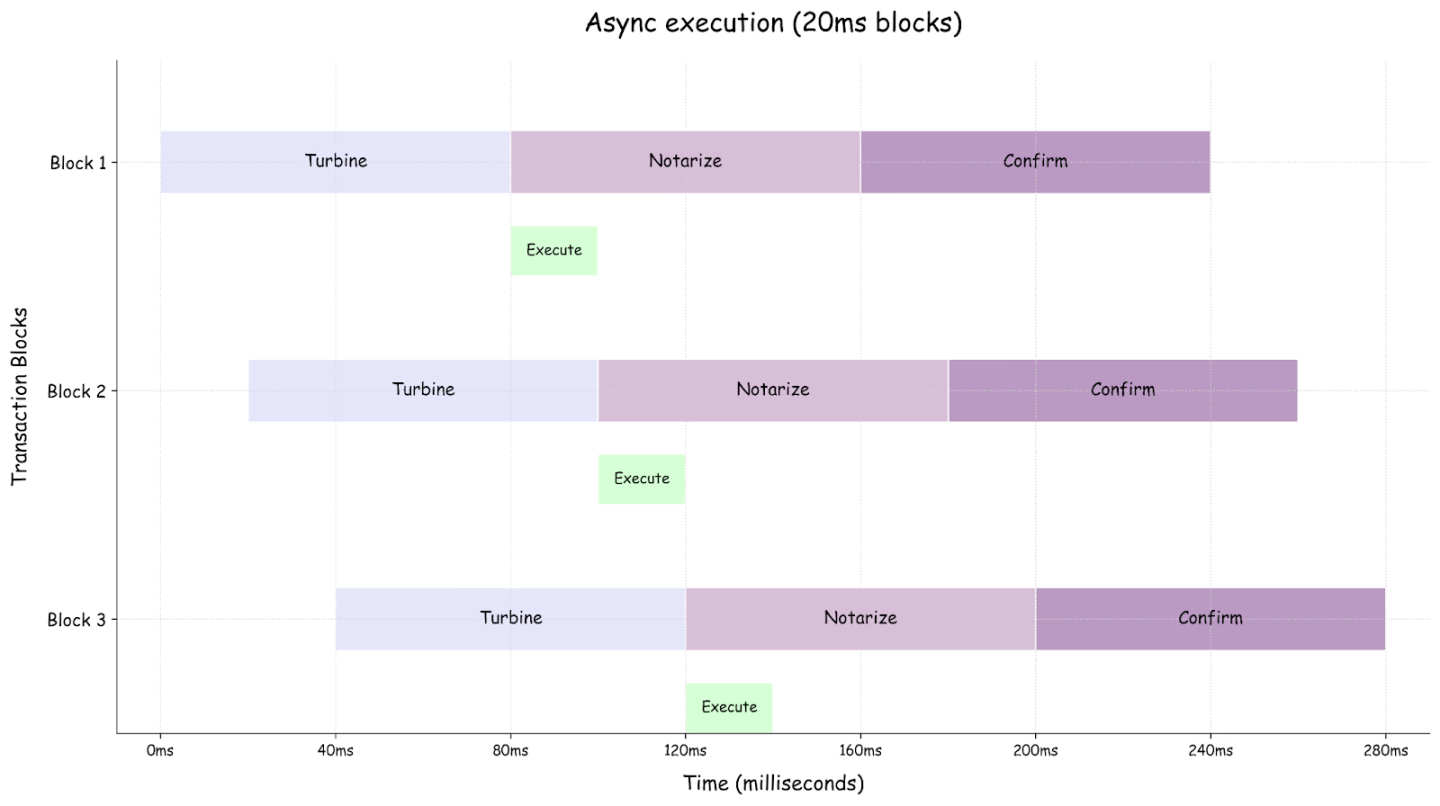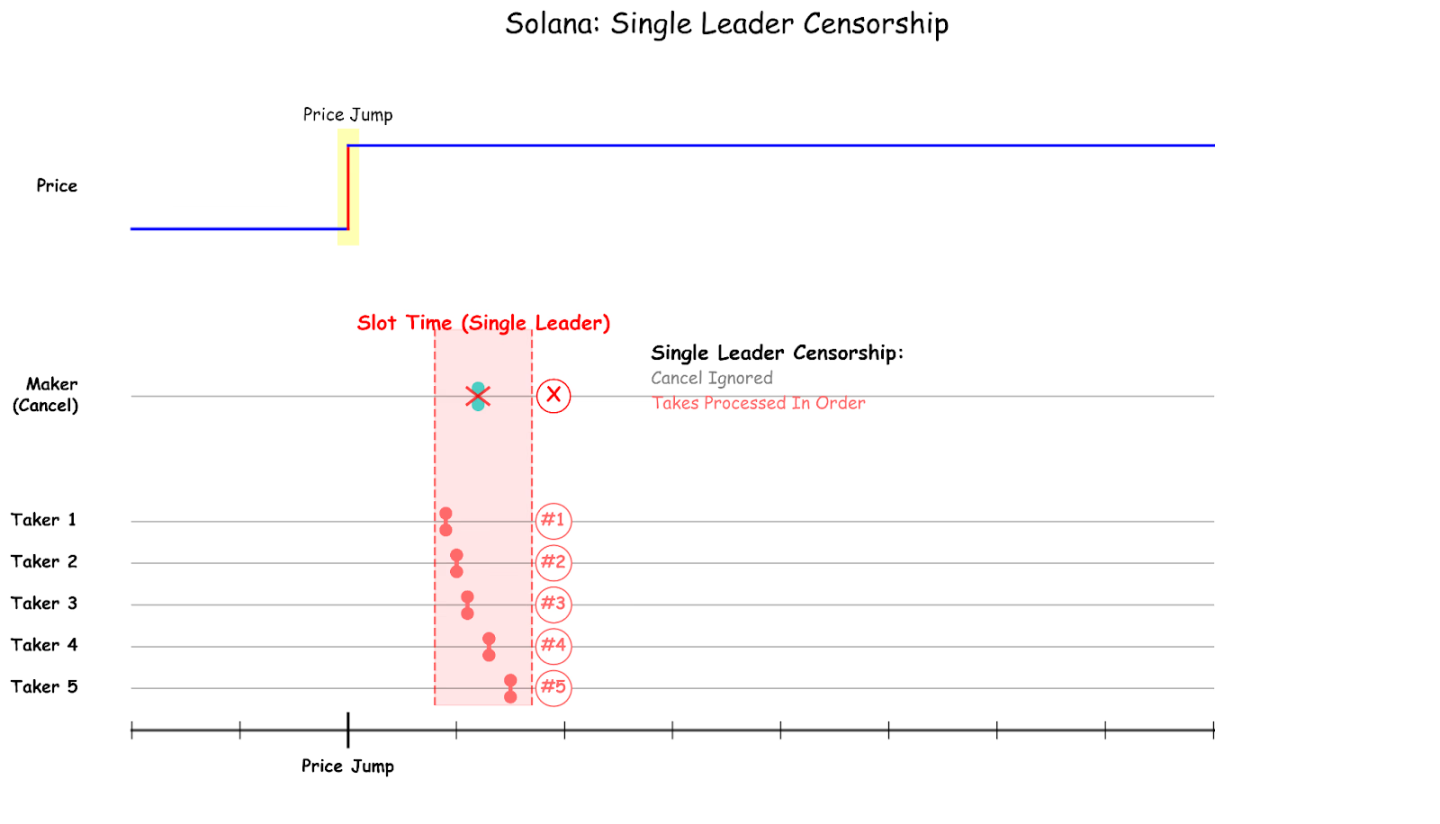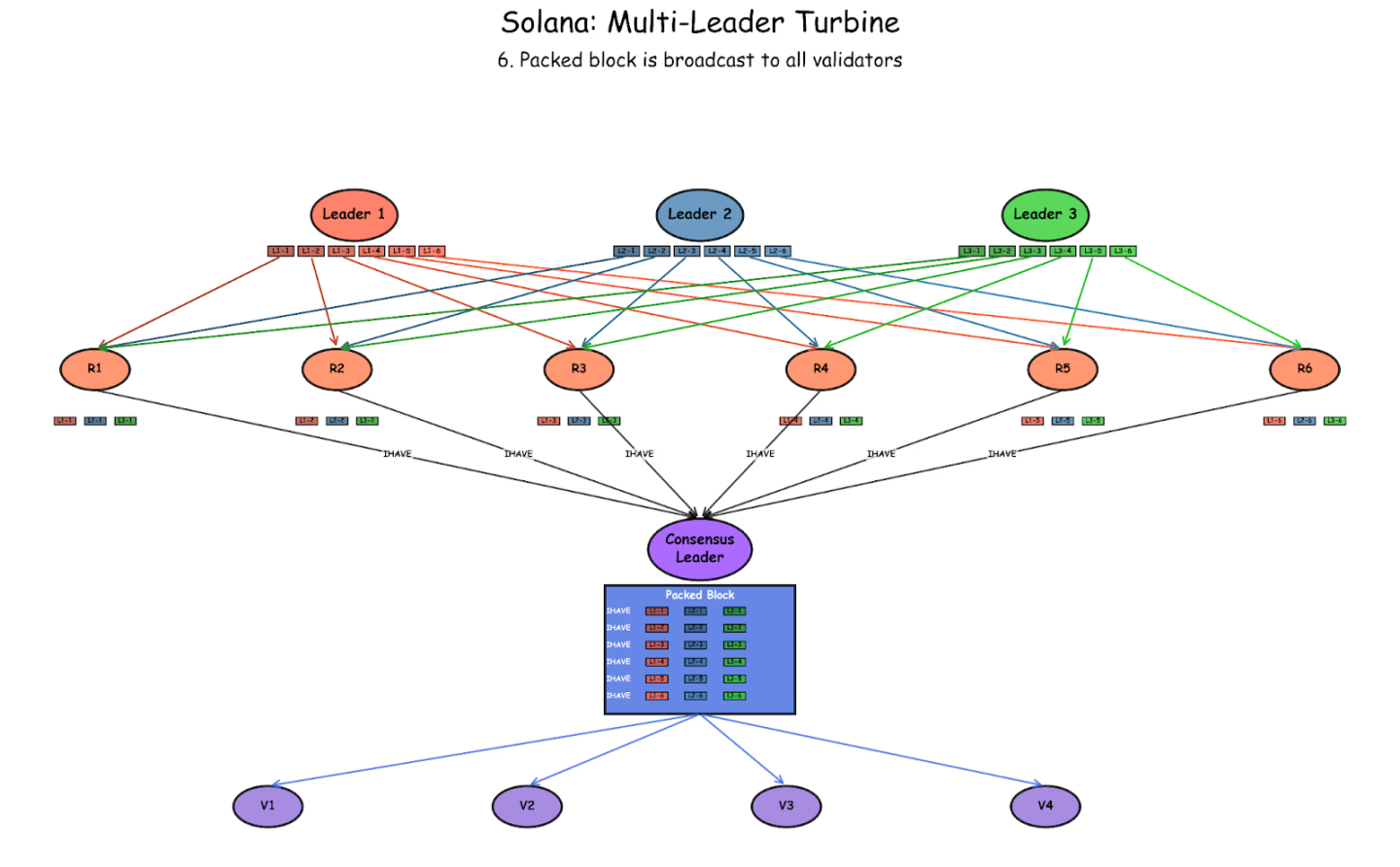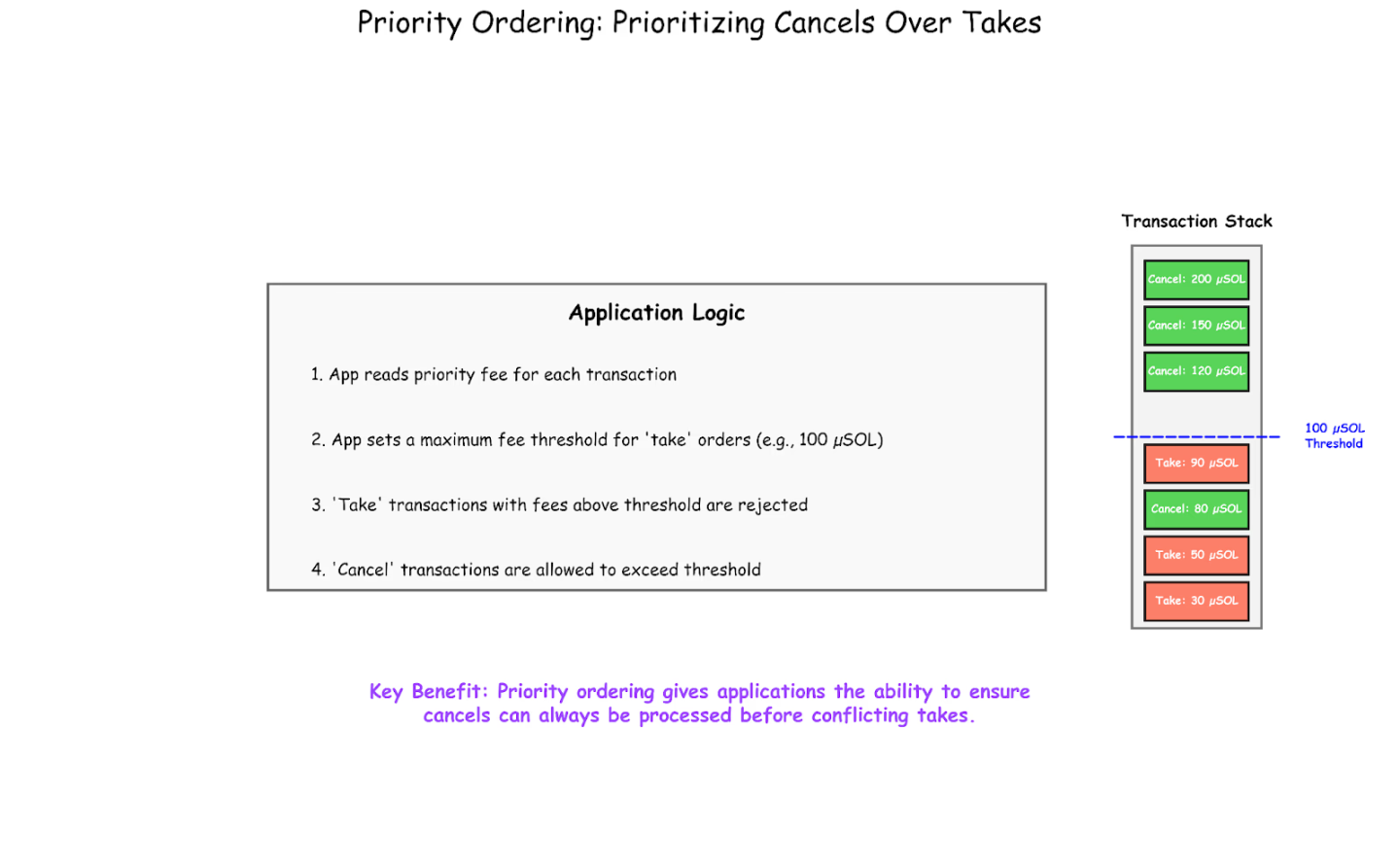A quick look at Solana’s latest roadmap: BAM transaction optimization, DoubleZero launch, Alpenglow consensus
- 核心观点:Solana 推进 ACE 技术优化市场微观结构。
- 关键要素:
- Jito BAM 提升交易执行灵活性。
- Alpenglow 协议缩短最终性时间。
- MCL 增强全球同步信息能力。
- 市场影响:提升链上市场流动性和效率。
- 时效性标注:中期影响。
Original article by: Anatoly Yakovenko, Solana Labs; Max Resnick, Anza; Lucas Bruder, Jito Labs; Austin Federa, DoubleZero; Chris Heaney, Drift; Kyle Samani, Multicoin Capital
Original translation: Alex Liu, Foresight News
Solana’s original mission was to build decentralized infrastructure for the Internet Capital Markets (ICM). Increasing bandwidth and reducing latency (IBRL) is necessary, but not sufficient. The third pillar of the Solana roadmap must respond to the complexity of market microstructure. Markets are composed of many dynamic factors that often have large but unpredictable effects on the overall equilibrium. Until recently, it was unclear how the market microstructure of ICM should differ from traditional finance (TradFi).
Today, the Solana ecosystem is converging around a common vision: Application-Controlled Execution (ACE). The ultimate goal of ACE is to enable smart contracts to control transaction ordering with millisecond accuracy. Our exchanges with multiple teams in the ecosystem show that market microstructure issues have become the most critical challenge facing Solana.
The Solana community is working hard to tackle this problem from all dimensions.
At present, Solana is still the best choice for building applications in the crypto space - it has a large number of users, sufficient liquidity, a clear regulatory environment, excellent wallets, and global access infrastructure. However, some applications still choose to build their own underlying technology to explore new market structures. Solana needs to become the preferred platform that "can both connect with existing users and boldly experiment with market microstructures."
The following content will be divided into two parts:
- the main trade-offs in market microstructure;
- Specific plans to support the implementation of flexible microstructures on the mainnet are divided into three categories: short-term, medium-term and long-term.
Trade-offs in market microstructure
The design dimensions of market microstructure are so rich that it is impossible to list them all, but here are the core trade-offs that are of most concern to current applications:
Privacy vs. Transparency
Should orders remain hidden until they are executed? For large retail orders, broadcasting them in advance may help to get better transactions because it reduces information asymmetry between traders and market makers. But hiding liquidity can also protect market makers from "harmful orders" and thus improve overall market liquidity. However, this protection also comes at a cost: hiding orders reduces transparency and makes it difficult for traders to predict the outcome before the transaction.
Rate-limited vs. unlimited transactions
Setting a "protective speed limiter" for takers can reduce adverse selection, narrow the bid-ask spread, and improve market liquidity. However, speed limits will also reduce trading volume and slow down the price discovery process. Importantly, trading volume is not the only indicator of market quality. What users really care about is where they can get the best price. Therefore, reducing "harmful taker transactions" may reduce total trading volume, but it can increase real liquidity.
Transaction inclusion vs finality vs execution delay
Many seemingly “trade-offs” can actually be optimized together. Solana’s current optimistic finality is about 1 second. When the Alpenglow protocol goes live in early 2026, transaction inclusion time is expected to drop to 50–100 milliseconds, and finality time will be shortened to about 150 milliseconds. This will enable market makers to update quotes faster and reduce “gap risk.”
Co-location vs Geographic Decentralization
Many people believe that colocation is faster, but if all verification nodes are concentrated in New York, facing sudden news from Tokyo, it will cause information transmission delays. Through the Multiple Concurrent Leaders (MCL) mechanism and edge transaction inclusion mechanism, Solana can achieve global synchronous information ingestion, greatly improve price discovery efficiency and enhance risk resistance.
Priority Market Maker vs Priority Taker
Market maker priority can reduce adverse selection and narrow the spread. In Solana's current mechanism, takers actually take implicit priority due to the scheduling auction mechanism. In the future, ACE will give developers the ability to define priority logic (such as order withdrawal priority, setting speed limiters, etc.).
Retail investors vs institutions
The most liquid markets are often driven by retail investors. Solana encourages the construction of differentiated applications for different needs, serving the coexistence and development of institutions and retail investors.
Flexibility vs. uniformity
The Solana community has always been pragmatic rather than dogmatic. Since there is no single optimal solution for market structure, the only way is to test, iterate, and optimize in the mainnet. Therefore, Solana is building a flexible infrastructure to support ACE and promote the rapid evolution of market structure.
Hybrid architecture vs full on-chain
Solana's goal is to build a fully on-chain market, rather than a settlement layer serving centralized exchanges. There is no technical obstacle to this goal, it just needs to be built. Solana's first priority is to bring more liquidity to the mainnet.
ICM Roadmap: Short-term, mid-term and long-term plans
The current Solana mainnet is not an ideal operating environment for CLOB (central limit order book), but this situation is about to change. Multiple teams in the ecosystem are systematically upgrading the entire technology stack to promote the prosperity of CLOB on the mainnet. We will introduce the future path in stages:
Short term (1–3 months): Jito BAM and Anza transaction optimization
Jito’s Block Assembly Marketplace (BAM)
BAM is the next-generation high-performance transaction processing system built by Jito, which is scheduled to be launched on the testnet at the end of July 2025. It provides powerful functions for Solana validators, traders and applications through globally distributed nodes running in a trusted execution environment (TEE), and is close to realizing ACE. Projects such as Drift, Pyth and Dflow have become the first design partners.
BAM supports the application of custom transaction sorting logic through a plug-in mechanism, allowing developers to build a transparent and verifiable transaction execution system for CLOB. Transactions remain confidential before execution, but the sorting process is completely open source and verifiable. This model does not require modifying the validator client or negotiating an integration agreement. You only need to build a plug-in in BAM to plug and play access to the entire Solana network.
Recommended reading: No more being squeezed when trading on SOL? Understanding Jito’s newly launched BAM
Anza’s transaction optimization
Anza is also promoting improvements in transaction landing stability. Agave 2.3 introduces a new TPU client, significantly reduces transaction sending latency, and fixes QUIC-related issues. Most of the optimizations are now online, and top market makers have observed that the 95th percentile latency is 0 slot through the standard TPU path, achieving extremely high certainty.
Medium term (3–9 months): DoubleZero, Alpenglow, Asynchronous Execution (APE)
DoubleZero (DZ)
DZ is a fiber optic network customized for Solana, which significantly reduces latency and increases bandwidth, and can also optimize data transmission through hardware multicast. The test network has more than 100 validators and 3% of the main network stake, and is expected to be launched on the main network in mid-September 2025. As DZ becomes more popular, Solana can increase transaction inclusion speed and further improve network stress resistance and fairness.
Alpenglow Consensus Protocol
Alpenglow is Solana's next-generation consensus protocol, which reduces block finality from 12.8 seconds to about 150 milliseconds. The protocol will also simplify the design to facilitate future support for MCL and APE. It is expected to be launched on the mainnet in late 2025 or early 2026.
Asynchronous Program Execution (APE)
APE removes the replay mechanism in the transaction landing path and reduces latency, which Solana has always listed as a key goal for several years. With the simplification of Alpenglow consensus, the implementation complexity of APE has been significantly reduced. Multiple proposals (SIMD 192, 290, 297, 298, 301) have been submitted and are expected to be launched after Alpenglow goes online in the first half of 2026.

Asynchronous Execution
Long term (2027): Multiple parallel leaders (MCL) and protocol layer ACE
MCL and protocol layer ACE
To build the most liquid on-chain market, Solana needs to meet three requirements:
- Sufficient capacity to ingest all market information in real time;
- Faster confirmation and higher tick rate;
- Applications have the ability to control transaction ordering.

A single leader can review transactions
Most current blockchains have a single-leader structure, which cannot guarantee the fairness or censorship resistance of transaction ordering.

MCL uses multiple leaders to build blocks at the same time, reducing the possibility of a leader reviewing or manipulating transaction ordering. Transaction ordering is based on priority fees, and each application can design logic to control ordering accordingly, such as order withdrawal priority.

Cancellation based on priority fee
Global Synchronous Information
MCL also enables information from different locations around the world to be synchronized on the chain. Market makers can integrate real-time information from New York and Tokyo in the same contract to formulate strategies. This capability is difficult to replicate in traditional centralized systems and is also a unique advantage of decentralized infrastructure in the competition of the capital market.
Solana's vision of an Internet capital market is accelerating. From the bottom of the technology to the upper layer of the application, the entire ecosystem is working hard to build the world's most liquid on-chain financial system. ACE will serve as the core paradigm to bring about a change in transaction ordering for Solana, allowing smart contracts to truly control financial infrastructure.


![Axe Compute [NASDAQ: AGPU] completes corporate restructuring (formerly POAI), and Aethir, an enterprise-grade decentralized GPU computing power, officially enters the mainstream market.](https://oss.odaily.top/image/2025/12/12/ff08e068a361495da15f80b89405441e.jpeg)
